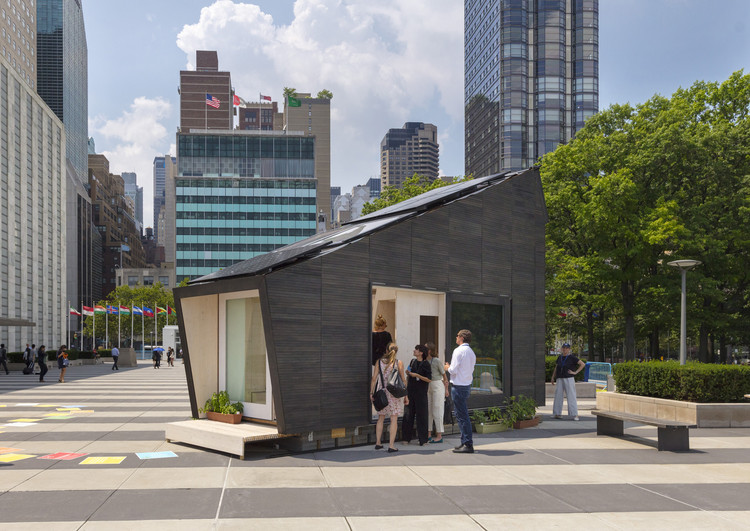
In an effort to spark public discussion and new ideas on how sustainable design can manifest as decent, affordable housing, Yale University has collaborated with UN Environment and UN-Habitat to unveil a “tiny house” fully powered by renewable energy. At 22-square-meters, the eco-house is designed to “test the potential for minimizing the use of natural resources such as water.”
The prototype was unveiled during the United Nations High-Level Political Forum on Sustainable Development, constructed from locally-sourced, bio-based renewable materials. While the first prototype is designed for the climate and context of New York, future iterations can be adapted for site-specific conditions around the globe. Design and fabrication of the module was carried out by Gray Organschi Architecture, working in direct partnership with the Yale Center for Ecosystems in Architecture.


The module has been designed to address the demand placed by the housing sector on the planet’s total resources, which currently stands at 40%. The scheme’s inbuilt systems include solar energy generation, on-site water collection, natural daylighting, plant-based air purification, and passive cross-ventilation. The interior contains a range of flexible, adaptable components building on the modern architectural trend of smart micro-living.


We clearly need more housing, but the key thing is that we also need smarter housing. The housing sector uses 40 per cent of the planet’s total resources and represents more than a third of global greenhouse gas emissions. So making them more efficient will benefit everyone, and it’ll mean lower bills too. Innovations like the Ecological Living Module are what we need more of.
-Erik Solheim, Head, UN Environment


With the earth’s population expected to approach 10 billion by 2050, and with one billion people today living in informal settlements, the project embodies the challenge for architects and designers to develop communities which sustainably expand capacity, and celebrate innovation in building systems and infrastructure.


News via: UN Environment
























